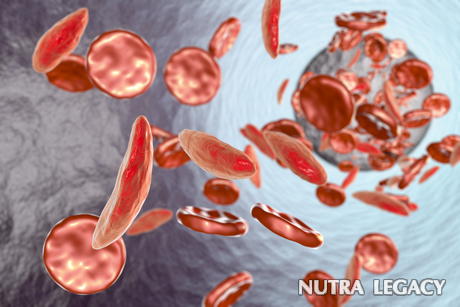5 Interesting Facts about Sickle Cell Disease
People with Sickle Cell disease have a blood disorder that affects red blood cells. These red blood cells contain hemoglobin S cells that become crescent shaped and therefore cannot pass properly through small blood vessels. Those infected with Sickle Cell disease do not receive blood throughout their entire body and eventually tissue becomes damaged. It is a serious and deadly disease that must be treated properly. Below are some facts regarding Sickle Cell disease.

1.Sickle Cell Disease is Inherited
Sickle Cell disease is genetic and the symptoms usually begin in childhood. It is due to a mutation of the HBB gene Patients will have a very low number of red blood cells and repeated infections. If both your parents have Sickle Cell then there is a 50% chance that your child will have a trait. If Sickle Cell runs in your family make sure to have your children checked at a young age to get the proper treatment
2.Sickle Cell is the Most Common Inherited Blood Disorder
Millions of people are infected with Sickle Cell worldwide, and in the United States alone it affects over 70,000 Americans. It is most common in African Americans. Other countries with a high concentration of people infected include India, Italy and Greece as well as other countries on the Arabian Peninsula and the Mediterranean.
3.Signs and Symptoms
Some signs and symptoms of Sickle Cell include severe pain in bones and muscle, fatigue, problems with eye sight and in later stages yellow skin from liver problems. The pain is caused by the sickle shaped cells and many of the other symptoms are similar to clots. Either way it is important to get your blood tested right away if you experience any of these symptoms.
4.A Blood Test can Check If you Have the Sickle Cell Trait
A simple blood test will check your Hemoglobin for the Sickle Cell (AS) trait. In this trait more Hemoglobin A are produced than Hemoglobin S in red blood cells. Early diagnosis is a must for children. Chances for infection are higher for children.
5.There are a Variety of Treatment Options
Treatments for Sickle Cell include blood transfusions, antibiotics as well as numerous vaccinations to protect you from bacteria. Folic acid supplementation is also important to protect you from blood clots that can be fatal. Some causes of death from Sickle Cell include bacterial infections, stroke and heart failure. This is because narrowed blood vessels can block blood flow to the heart, brain and other vital organs. Any sign of infection or blood clot should be brought to your doctor’s attention right away.
There is no cure for Sickle Cell so the most important thing is to get proper treatment so you can lead as long and healthy life as possible.
For more information on blood disorders and thick or thin blood click here.


The information supplied in this article is not to be considered as medical advice and is for educational purposes only.
|
 7 Feb 2011 7 Feb 2011 |
